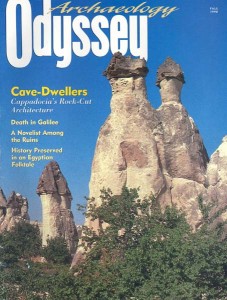Archaeology Odyssey, Fall 1998
Features
The Cave-Dwellers
Cappadocia’s mysterious rock-cut architecture
According to Leo the Deacon, a tenth-century Byzantine historian, the inhabitants of the Anatolian province of Cappadocia were troglodytes: “They went underground in holes, clefts, and labyrinths,” he reported. This remote, mysterious people lived “in dens and burrows.” The surviving ancient architecture of Cappadocia—a...Read more ›
Monasteries?
Heavens, no
When Cappadocians cut vast living spaces into the conelike formations of the local volcanic tufa around the turn of the first millennium, they created vestibules, halls, kitchens, storage areas, stables, churches and burial chapels, all hollowed out of the soft rock and arranged around...Read more ›
“This is the Taste of Death”
A fleeing Egyptian bureaucrat reveals what life was like in ancient Canaan
Can a folktale from the Middle Bronze Age provide us with information about the remote past that has eluded even extensive archaeological expeditions? The answer is yes. The Tale of Sinuhe,1 composed during Egypt’s Middle Kingdom, may help resolve scholarly debates about social conditions in Canaan-Syria (also...Read more ›
Death in Peqi’in
Sometimes archaeologists come face-to-face with a site so unusual that they feel a sense of awe in its presence. That describes our experience upon entering and excavating a mortuary cave in the Galilean hills of northern Israel. Used for burials during the Chalcolithic period (c. 4500–3500 B.C.E.),...Read more ›

